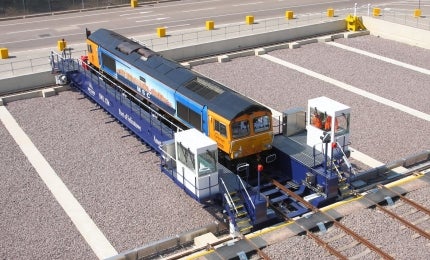
Sometimes, it can be necessary to commission equipment tailored specifically to the physical constraints of a location, as well as its maintenance activities.
Traversers are a perfect example of large-scale installations that are built to order and Mechan is making a name for itself in this field, having created the largest vehicle mover in the UK for the Port of Felixstowe’s North Rail Terminal.
The rail traverser is the most advanced ever produced by the firm and took almost 12 months to design and build. Weighing 90t and measuring 30m in length, it is equipped to handle future locomotives that are expected to be larger than today’s trains.
No job is too large or small for Mechan and the firm guides traverser clients from concept to manufacture and installation, producing a completely bespoke product that meets individual workshop and vehicle requirements.
Demand for these unique machines is much lower than other depot equipment, but the firm is one of the few companies in the UK able to showcase its ability. In 2014, it produced two 80t traversers for Hitachi’s Newton Aycliffe facility in County Durham, where they are being used to help produce the new high speed trains for the InterCity Express Programme. Without them, this sophisticated production line would have been three times as long.
The pair constructed for Hitachi was made to a detailed specification and sit inside and outside the plant respectively. The internal unit has a special low profile design and 4m-long hydraulic ramps, to allow the pit to be used as a thoroughfare when the traverser is not in use. The external installation has a more conventional construction, but was fitted with a canopy to protect new rail vehicles from the elements.
Most recently, Mechan designed and built a 130t, two-road traverser to suit the tight confines of Crossrail’s Ilford depot, enabling vehicles to be manoeuvred around a new paint shop. The 28m-long behemoth was constructed and tested before being disassembled and moved to site in components small enough to fit into the new facility. It was then rebuilt on site and proof tested to carry loads of 162t, before entering service.
